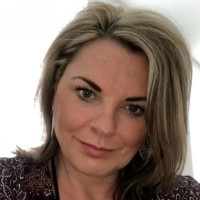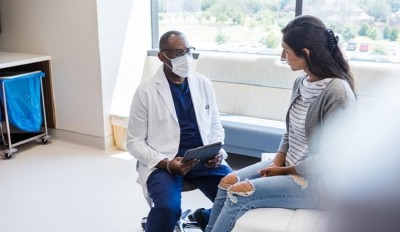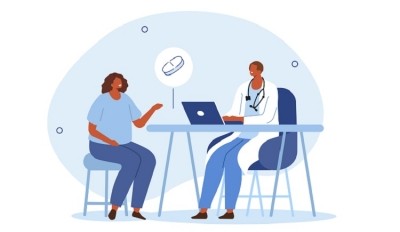Incorporating patient voice elevates rare-disease trials: Casimir

Gathering insights from patients in rare-disease trial planning and execution can lead to better study design, as well as research results. However, a long list of barriers can stand in the way between the researcher and the patient, making the process of collecting information and incorporating the patient voice a challenge.
Christine McSherry, cofounder at contract research organization (CRO), Casimir (an Emmes company) recently offer advice on how the industry can work to take down such barriers and better work with patients and advocates in “Leverage and Manage Relationships within the Rare Cancer Space,” a session at this month’s World Orphan Drug Congress. She spoke with Outsourcing Pharma (OSP) about the session, and how the clinical trial industry can collaborate with stakeholders more fruitfully.
OSP: To begin with, how do you define a ‘rare cancer’?
CM: It can be quite difficult to define and for some of our panelists it’s simply a numeric equation – e.g. 5/6 cases per hundred thousand – but in other cases people might consider a cancer rare if it lacks any treatment options, the R&D infrastructure (e.g. like mouse models) or clinical trials, so they can actually be very different in scope as from the FDA perspective [where only orphan drugs have a set pathway] it’s something with less than 200,000 patients, but in some diseases, we are talking about just a few hundred people and obviously the trial challenges between each can be very, very different. For many of these rarer cancers stakeholder partnerships, therefore, becomes absolutely critical – it’s the oil that enables many of these trials to function.
When you look at some of the rare – rather than orphan – indications you will quickly see that to get these trials working, with enough participants, the special interest groups and advocacy groups are essential in finding patients, encouraging them to take part, and providing the support networks needed to advance research. Therefore, to engage these groups you really need to be taking forward patient perspectives from the outset, not as an afterthought, building them into the design stage of trials. The earlier you engage them, the more likely they will be able to deliver meaningful input into protocol design and provide communication with participants so that they stay engaged in the trial.
These patients are often giving away their most precious resources left – their time –and we must ensure we are making the risk-reward aspect truly beneficial. For example, in some cases we are talking about patients that are looking at potentially their last few months alive, so we need to make sure we keep this front of mind when designing protocols.
OSP: Is the FDA now changing to accommodate the massive difference in patient populations between some orphan and rare trials?
CM: One of the encouraging aspects mentioned by the panel is that we are now seeing these trials being treated very differently by regulators and recently the FDA launched the ‘rare cancers excellence group’, which is a big development, and should allow for more flexible trial requirements and endpoints. Treating a cancer with a pool of 150,000 patients versus one with just a few hundred is very different.
What I expect (hope) is that over the next few years the FDA will work with advocacy and patient groups much closer and start to build out more personalized trial pathways for these diseases – rather than a one size fits all approach for anything with Orphan population or smaller.
OSP: Why did you join the Emmes group and how has that relationship been in helping you advance trials and patient goals?
CM: Mindy [Leffler, Casimir president and co-founder] and I started the company with the goals of bringing better advocacy for all rare diseases, and before we chose Emmes we did in fact turn down a number of other larger offers. It was important to us to really be able to find a CRO that wanted to partner with patients and had a similar philosophy. We wanted to only work inside a CRO that shared our commitment to transforming the patient experience in trials – someone that shared our passion to improve care and clinical outcomes.
What I can say already is that there is a shared humility and humbleness between both organizations and this has been so crucial in advancing our collective goals. Emmes, especially with the rare disease center at Orphan Reach, has really opened up the possibilities for what we can do. Consequently, we are now able to really look at the big picture over the next 5-years and make a difference across many more diseases and trials.
OSP: What advice would you give to any innovators looking for a CRO partner?
CM: The most important thing for any sponsor with a rare disease and all the complexity that goes into these trials and patients – is to look to see that passion and focus for that therapy area. You want an organization that is looking to work with the advocacy groups from the start and build the patient requirements into how they run the trial. That needs to be embedded. And, ultimately, putting aside the obvious patient benefits, will also help ensure better results and faster trials for the sponsors. A good level of communication about the goals, the risks, and bringing the patient into the decision-making process will enable you to have real trial advocates.
OSP: Is being patient-centric just about the patients?
Christine: No and I think this is another big misunderstanding, you need to engage the entire family and caregivers into the process. They may not be ill, but they are the ones on the front line providing all the support you need to advance the trial. For me, one of the most crucial things is to be respectful of time – time they are taking now, the time they are potentially losing in the trial, and what’s the quality of this time (how sick will they be).
As with these patients and families that’s the one thing, once the trial is over, that they cannot get back – and they might only have a limited amount of it. We need to treat our participants with respect and have them at the table with all stakeholders when making decisions about trial design and participation.
Casimir [is a CRO that engages patient communities as partners in research, starting every project from the patient perspective and taking new approaches to understanding and documenting disease progression and treatment benefits.


















